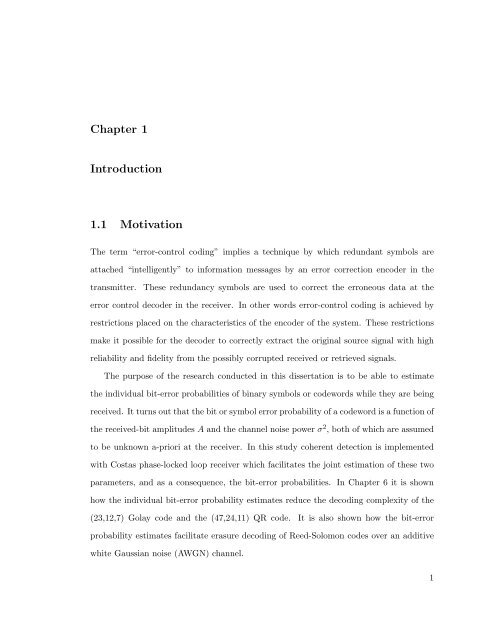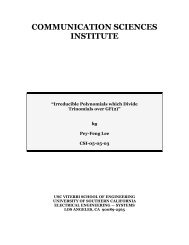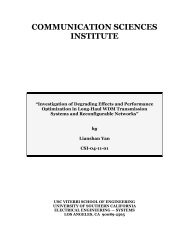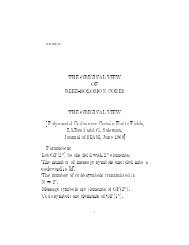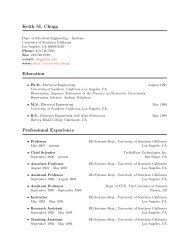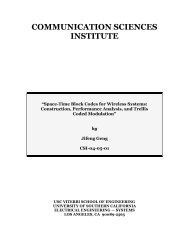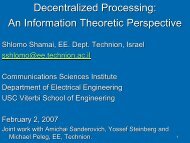Decoding Error-Correction Codes Utilizing Bit-Error Probability ...
Decoding Error-Correction Codes Utilizing Bit-Error Probability ...
Decoding Error-Correction Codes Utilizing Bit-Error Probability ...
You also want an ePaper? Increase the reach of your titles
YUMPU automatically turns print PDFs into web optimized ePapers that Google loves.
Chapter 1<br />
Introduction<br />
1.1 Motivation<br />
The term “error-control coding” implies a technique by which redundant symbols are<br />
attached “intelligently” to information messages by an error correction encoder in the<br />
transmitter. These redundancy symbols are used to correct the erroneous data at the<br />
error control decoder in the receiver. In other words error-control coding is achieved by<br />
restrictions placed on the characteristics of the encoder of the system. These restrictions<br />
make it possible for the decoder to correctly extract the original source signal with high<br />
reliability and fidelity from the possibly corrupted received or retrieved signals.<br />
The purpose of the research conducted in this dissertation is to be able to estimate<br />
the individual bit-error probabilities of binary symbols or codewords while they are being<br />
received. It turns out that the bit or symbol error probability of a codeword is a function of<br />
the received-bit amplitudes A and the channel noise power σ 2 , both of which are assumed<br />
to be unknown a-priori at the receiver. In this study coherent detection is implemented<br />
with Costas phase-locked loop receiver which facilitates the joint estimation of these two<br />
parameters, and as a consequence, the bit-error probabilities. In Chapter 6 it is shown<br />
how the individual bit-error probability estimates reduce the decoding complexity of the<br />
(23,12,7) Golay code and the (47,24,11) QR code. It is also shown how the bit-error<br />
probability estimates facilitate erasure decoding of Reed-Solomon codes over an additive<br />
white Gaussian noise (AWGN) channel.<br />
1


